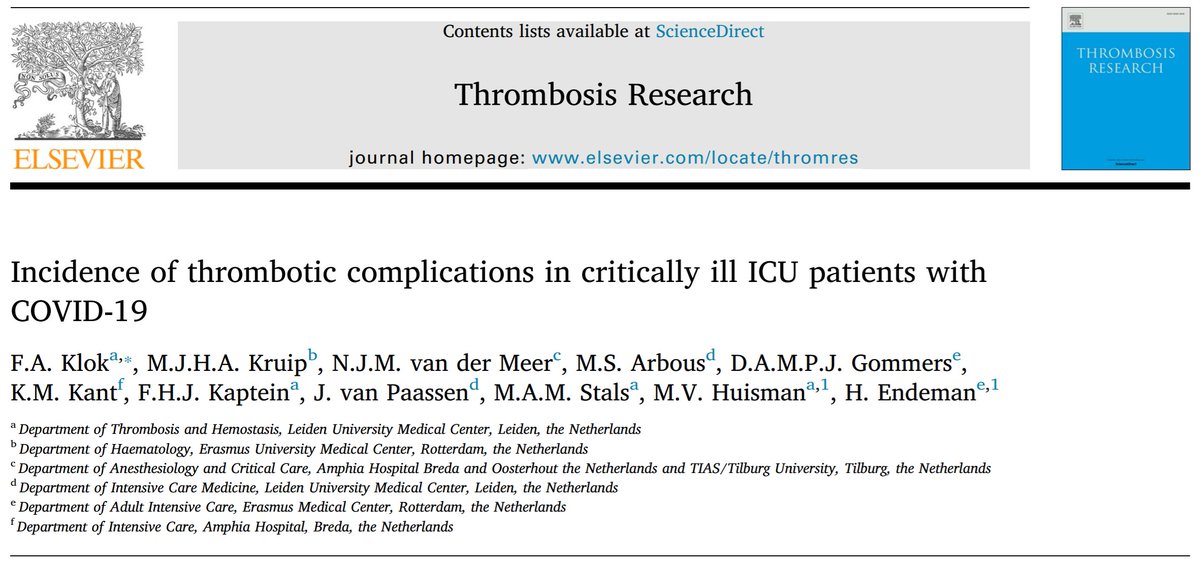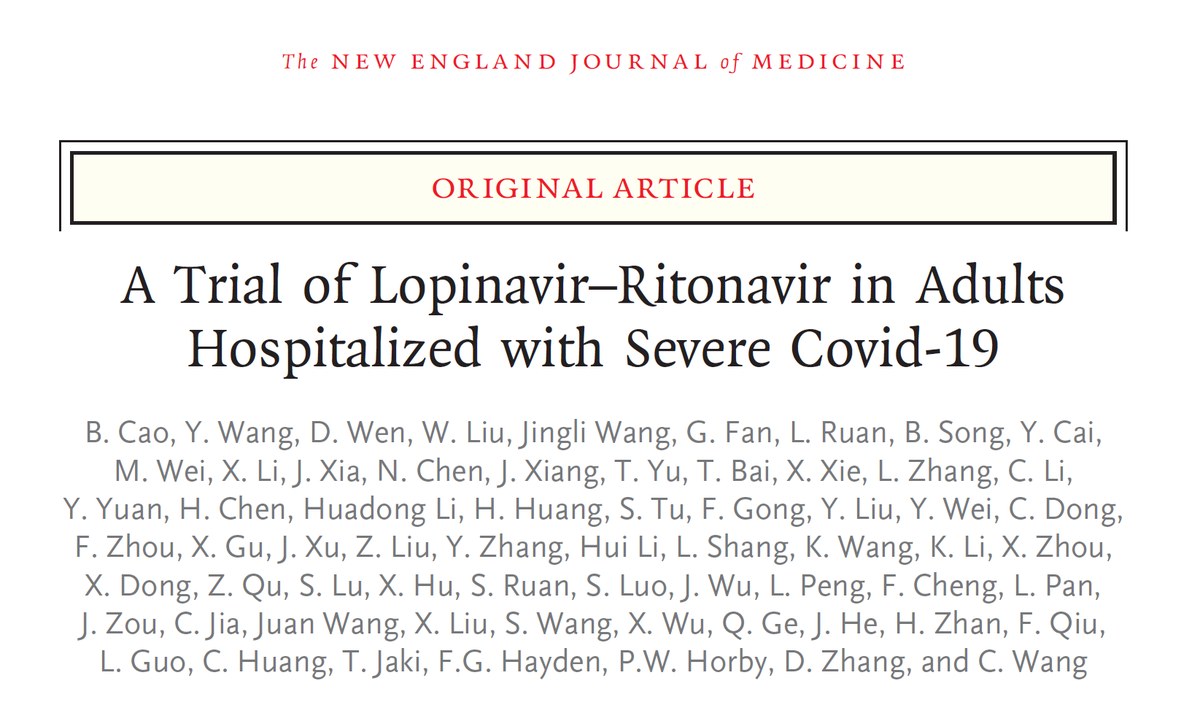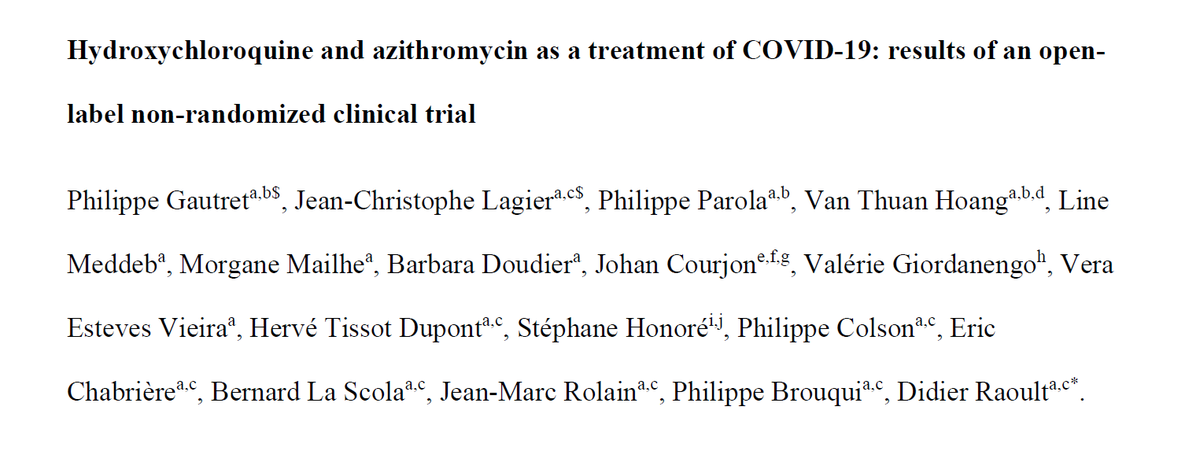What is the risk of macrovascular thrombosis among critically ill patients with #SARSCoV2 #COVID19? Let’s take a look at the data.
Here’s #HowIReadThisPaper on a @ThromboisRese1 case series examining this question:
Klok et al: thrombosisresearch.com/article/S0049-…
(Thread)

Background: #COVID19 can cause inflammation, hypoxemia, and disseminated intravascular coagulation (DIC), which all increase risk for venous (DVT, PE) and arterial (CVA, MI) thrombosis.
Currently, the risk of thrombosis in patients critically ill with COVID19 is unknown.
Question: What is the cumulative incidence of venous and arterial thrombosis among critically ill patients with #COVID19?
Date published: 10 April 2020
Funding: None specified
Study design: Case series
Population: 184 patients with #COVID19 pneumonia (diagnostic criteria not specified) admitted to the ICU at 3 hospitals in the Netherlands.
Study period: 3/7/2020 - 4/5/2020
Inclusion criteria: All patients admitted to participating ICUs with #COVID19 pneumonia during the study period were included.
Exclusion criteria: None specified
Study Procedures: Patients were considered at risk for thrombosis from the date of ICU admission until ICU discharge, death, or April 5th, 2020 (whichever occurred first).
Diagnostic testing for thrombosis was initiated only if the diagnosis was clinically suspected.
Primary outcome: Composite of acute pulmonary embolism, deep vein thrombosis, myocardial infarction, ischemic stroke, or other arterial embolism.
Sample size justification: Not provided
Duration of follow up: Not specified
Loss to follow up: 0/184
Authors’ conclusions: The 31% incidence of thrombosis despite prophylaxis among critically ill patients with COVID19 is high. Rather than therapeutically anticoagulate all critically ill COVID19 patients, vigilance to diagnose and treat thrombosis is warranted.
My appraisal: Let’s make sure we understand what is being reported, then look for sources of chance and bias that could influence our interpretation of these results.
1. How did patients get into the study?
2. What was reported?
3. How did outcomes come out of the study?
The first question is about looking for selection bias. The authors included all patients admitted to participating ICUs during the study period.
This suggests these findings should generalize to all critically ill COVID19 patients, regardless of indication for ICU care.
That said, more information on the specific indications for ICU care (e.g. respiratory failure, shock, etc.) and duration of illness would help us confirm this.
Despite these omissions, enrolling all ICU patients with #COVID19 (not a subset) is a strength of this study.
Regarding what is being reported: the meaning of the primary outcome is not immediately clear.
Only 31/184 (16.8%) patients developed thrombosis, so where does the cumulative incidence of 31% come from?
The occurrence of an event X over time can be reported in two ways:
Cumulative incidence (X / # of patients at risk for X during a set time) = % of patients with X during a set time
Incidence rate (X / total duration of follow-up) = # of X per unit of person-time
Cumulative incidence is appropriate to use when the duration of follow-up is short - less time for loss to follow-up and occurrence of competing risks.
However, to interpret it, the time period it represents must be reported. In this study, it is not.
Could it be 24 days? This is the last time point at which data are shown in figure 1. But the study period was 30 days, so 30 days is the theoretical maximum between ICU admission and censoring.
As a cumulative incidence, the 31% without a timeframe is uninterpretable.
Alternatively, reporting the incidence rate would account for patients contributing different amounts of follow-up and allow for comparison to other populations.
To calculate this, we would need the total amount of person-days contributed by the 184 patients.
It would also be informative to know whether any thromboses occurred in the 17 patients on therapeutic anticoagulation on admission, but this is not reported.
Similarly, although no patients developed DIC, data on D-dimer, fibrinogen or bleeding events are not reported.
Regarding ascertainment of outcomes: the short duration of follow-up, clinically-driven search for thrombosis, and that ~75% of patients were still in the ICU at the end of the study are all likely to bias towards underestimation of the true thrombosis rate.
Also, unless all patients who died before developing the primary outcome had an autopsy performed, this study is vulnerable to under-ascertainment of the primary outcome among the 23 decedents.
How else would we know if deaths were caused by a fatal PE or MI?
Note that many risk factors for severe COVID19 (e.g. advanced age and cancer) are also risk factors for venous thromboembolism (VTE). Without a comparison group, even with a high incidence of VTE, we don’t know whether COVID19 is the cause or not.
In the meantime, what do the guidelines advise?
@WHO: VTE ppx w/ LMWH or heparin BID for all inpatients, unless ↑bleed risk, then use SCDs only.
@ASH_hematology: VTE ppx w/ LMWH or fondaparinux (if Hx of HITT) for all inpatients, unless ↑bleed risk, then use SCDs only.
Bottom line: The primary outcome can't be interpreted without a timeframe. The authors can fix this.
That aside, inclusion of all ICU patients increases generalizability, and multiple sources of ascertainment bias may lead to underestimating the true thrombosis risk.
(End)











